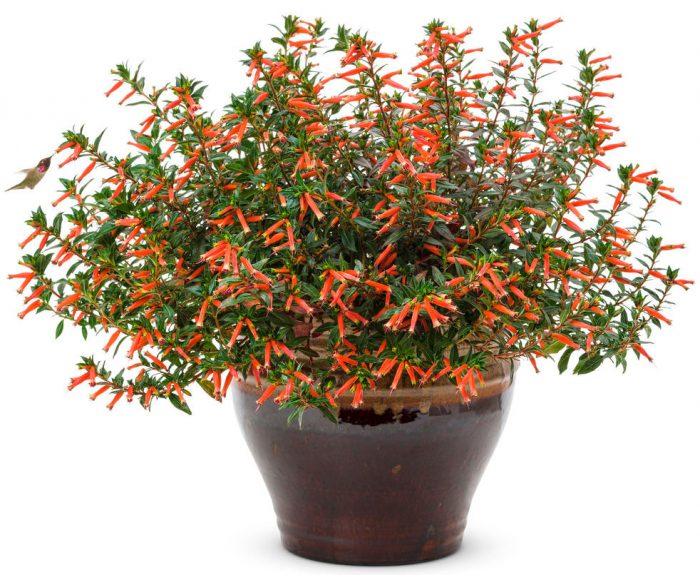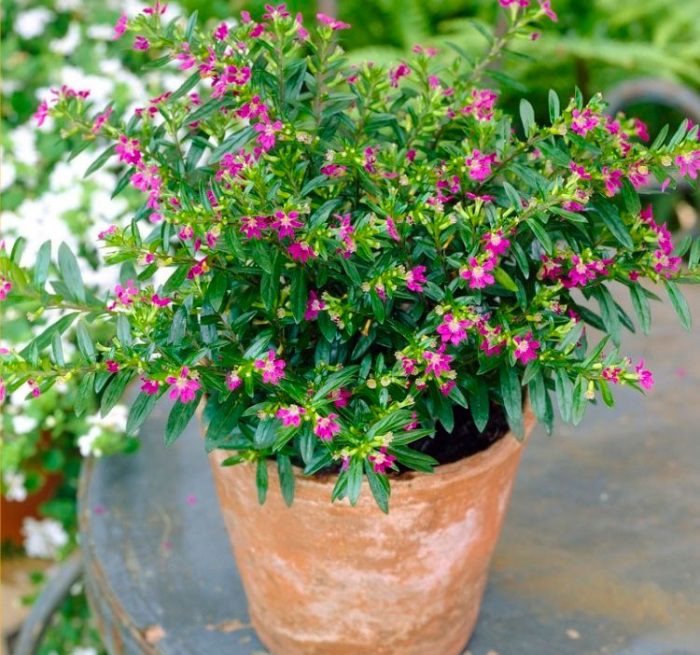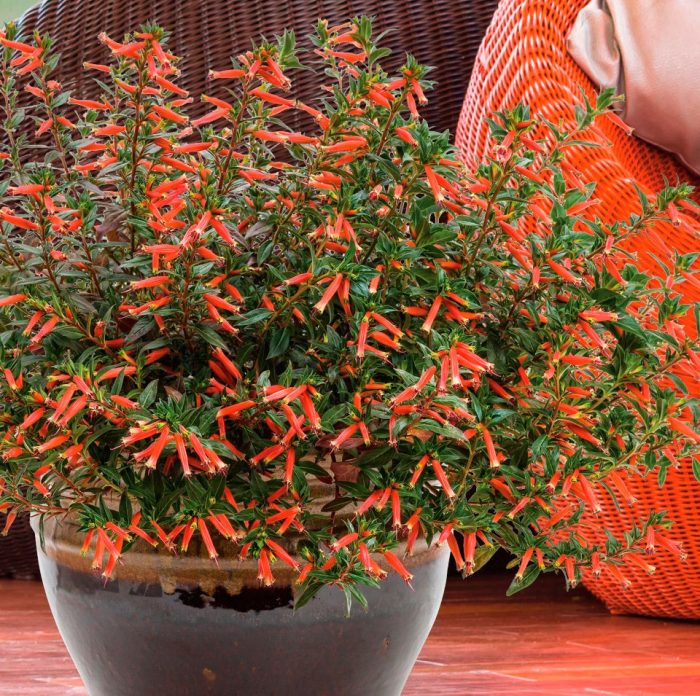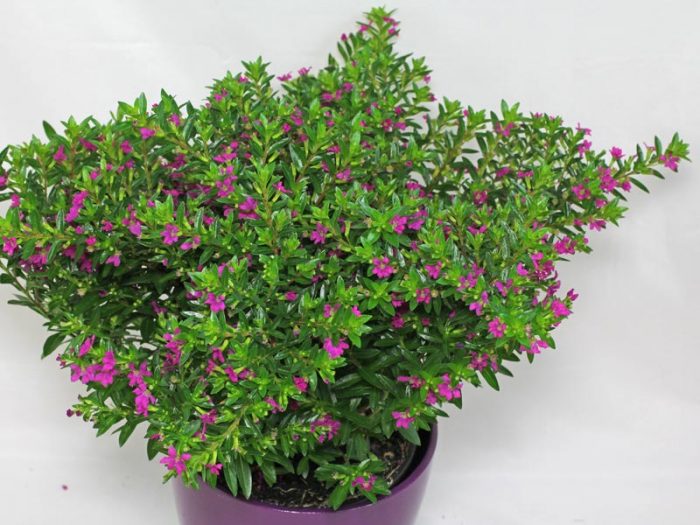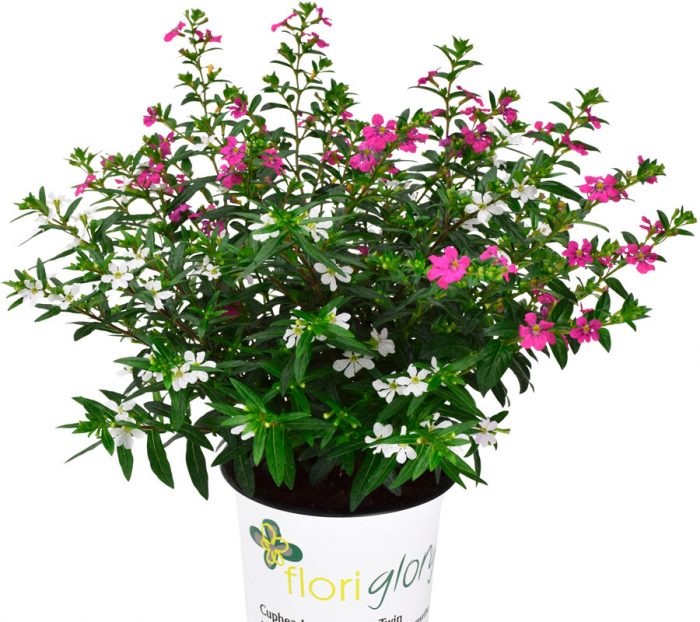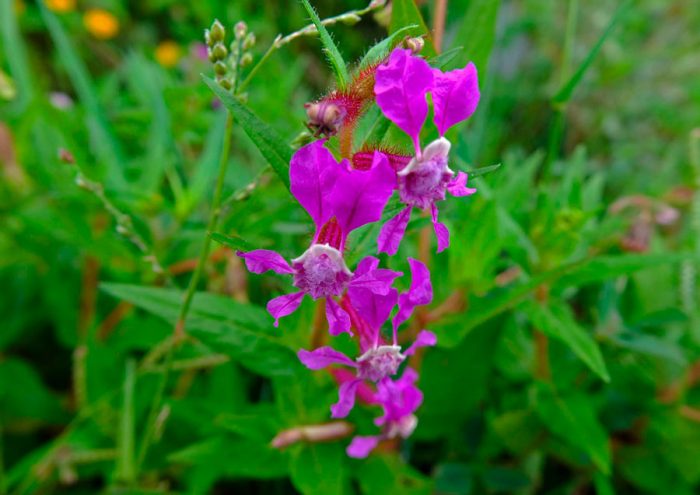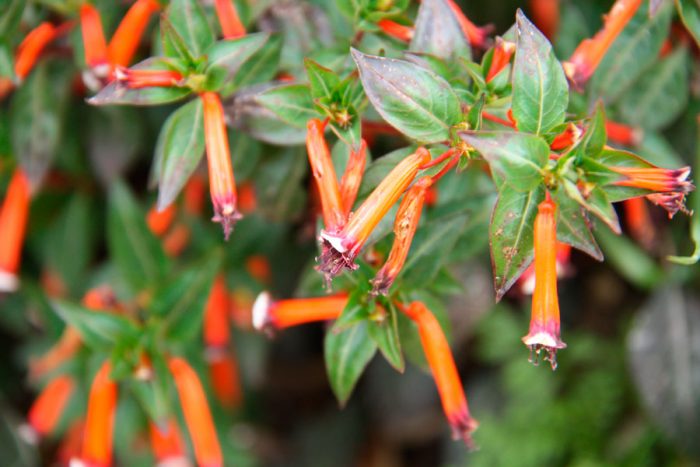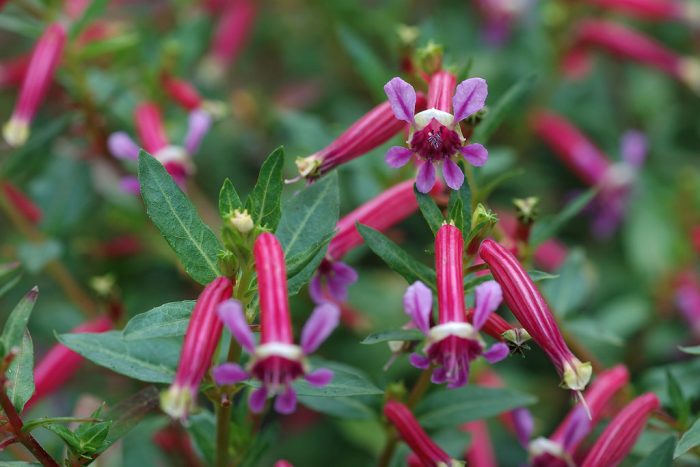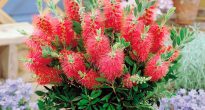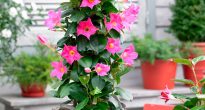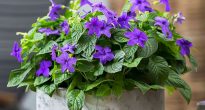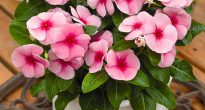A very unusual and rather interesting plant is kufeya. In its wild form, it is found only in America, or rather, in its southern and central parts. This unusual name comes from the Greek word "kyphos", which translates as bent, crooked. Perhaps this flower has acquired such an unusual name due to its curved fruits. On the lands of America, you can find about 250 species of kufei, which also include annual dwarf shrubs and shrubs.
As an annual garden plant, kufeyu is grown by gardeners living in northern latitudes. However, this flower is also grown indoors. This plant can winter well in the southern regions, and it is most often grown there as a perennial shrub.
The flowering of the kufei is quite long and it begins in March and ends only in October. During this period, his terry bushes become incredibly beautiful and refined. Most often, this shrub is planted in rather voluminous vases or concrete containers are used.
From the seeds of an annual species of this plant, laurel acid is obtained, the use of which has been found in chemical production. Gardeners, on the other hand, began to grow this shrub quite recently, about 15 years ago. Breeders have developed about 10 new types of kufei.
Caring for kufei at home
Choose a place for planting kufei should be one where there is a sufficiently large amount of light. It should also be borne in mind that she simply needs direct rays of the sun for normal growth and development.
Seat selection
In the southern regions, this lovely plant can be planted directly in the garden and grown like an annual shrub. These lush bushes of incredible beauty can also be grown on a balcony or terrace, in a flower bed, as well as in a pot, hanging planter, etc.
In the event that the kufeya grows in a pot, it can be taken outside during the warm summer months so that it can enjoy the fresh air. The pot should be placed in a bright place that will be well protected from the wind. With the onset of October, the flower is brought onto a closed veranda. And with the onset of frost, it is returned to its usual place.
In order for the bush to look beautiful and well-groomed, you should regularly remove dry leaves and flowers, as well as dead parts.
Temperature regime
This plant needs to be watered abundantly in spring and summer.When cold weather begins, the number of watering should be reduced, but this should be done gradually.
This adorable bush does great at room temperature. But in winter, he needs a temperature of only 5 degrees Celsius. Pruning should be done in the last weeks of winter. The branches should be shortened by 1/3 part. This is done to rejuvenate old shoots.
Watering
Watering is frequent and abundant in spring and summer, in autumn watering is reduced, bringing it to a minimum in winter.
Features of feeding
Fertilize the soil often enough. Kufeya has a very positive attitude towards organic fertilizers. In spring and summer, top dressing is done every time during watering. For this in 10 liters. water dissolve 20 grams of complex mineral fertilizer.
If desired, once every 1-2 weeks, you can fertilize with a water-soluble complex fertilizer for leaf feeding... In this case, the resulting solution should be sprayed on the foliage. And for a change, you can feed the plant with fertilizer for flowering.
Transplant kufei
It needs to be replanted every year. For this, you need to choose a soil that is perfectly drained and fertile. In order to make the desired mixture yourself, it is necessary to mix leafy earth (after sterilizing it), sand and peat in a 2: 1: 1 ratio.
Reproduction of kufei
This plant is mainly propagated by cuttings. For this, not very woody are selected. It is best to do this on warm spring days, while the daytime outside temperature should be at least 18 degrees.
To make the bush look more beautiful, you need to plant several cuttings in one pot at once. After the 3rd pair of leaves appears, you will need to pinch the top.
Also, this wonderful plant can be grown from seeds. To do this, it is best to purchase seeds of such varieties as kufeya lanceolate or Dutch red selection. The months April and May are great for sowing. For good seedlings, a temperature of 18-22 degrees is needed (this also applies to propagation by cuttings). The seeds should be placed in a not very large container, and covered with a polyethylene bag on top. This container must be placed on the windowsill, and it must be warm. In this case, it is not necessary to fill in the earth. When the sprouts appear, the seeds sit in small glasses. After the flowers grow up, they are transplanted into another more spacious container.
Diseases
Dark spots may form on the foliage, and there are also frequent cases of rotting of the root neck or other parts of the bush. This plant is also susceptible to attack by the whitefly. Often, diseases of kufei are associated with the appearance of gray rot or mold. If such problems are found, it will be necessary to process the bush with a special preparation for this type of rot, as well as a fungicide.
It is interesting
There is an opinion that kufeya contributes to the rapprochement of people. As a result, it is often grown in meeting rooms and offices. And if you put a pot with an elegant bush in a room, then the atmosphere in it will become more favorable and cheerful.
Types of kufei with photos
Among gardeners, the following types are popular:
Spread out coffee
The bush of an adult plant reaches a height of half a meter. It is decorated with dense, very beautiful foliage, as well as lovely flowers that have a white or purple color. It is grown from seeds, but it is quite difficult to acquire them. As a rule, seeds are highly germinating and are sown in a greenhouse or in open ground.
Kufeya "Blazing Bonfire"
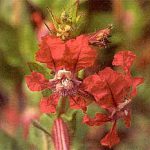

Kufeya fiery red
This species is very popular among gardeners, and it grows well in an apartment environment. It is also called a "cigarette", and this is due to the flowers (similar to tubes) of red color with dark edges, which is very similar to a smoldering cigarette. This shrub is very fond of warmth and should be taken out into the street only in the last days of May or the first in June. It looks like a neat little bush that blooms very beautifully with bright red flowers. He will make your windowsill, loggia or balcony elegant.
Pale kufeya
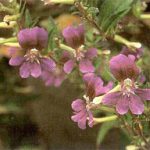

Kufea hyssopolis
This is a neat small bush that perfectly retains its shape and does not disintegrate due to heavy rain or wind. As a rule, propagates by cuttings. Since May, cuttings of this wonderful shrub can already be purchased at the flower shop. Despite the fact that the flowers are small. Such a kufeya looks very impressive during flowering, since there are incredibly many pink, white or lilac flowers on it, and they completely cover the bush. This species is very thermophilic and needs quite abundant watering. Most often grown in patios or balconies.
Lanceolate kufea
The bush usually reaches a height of 0.9 meters. Its flowers are painted in a dark lilac color and have an elongated tubular and at the same time incredibly beautiful shape. It blooms for a very long time from July to October. As a rule, reproduction takes place at the expense of seeds.

